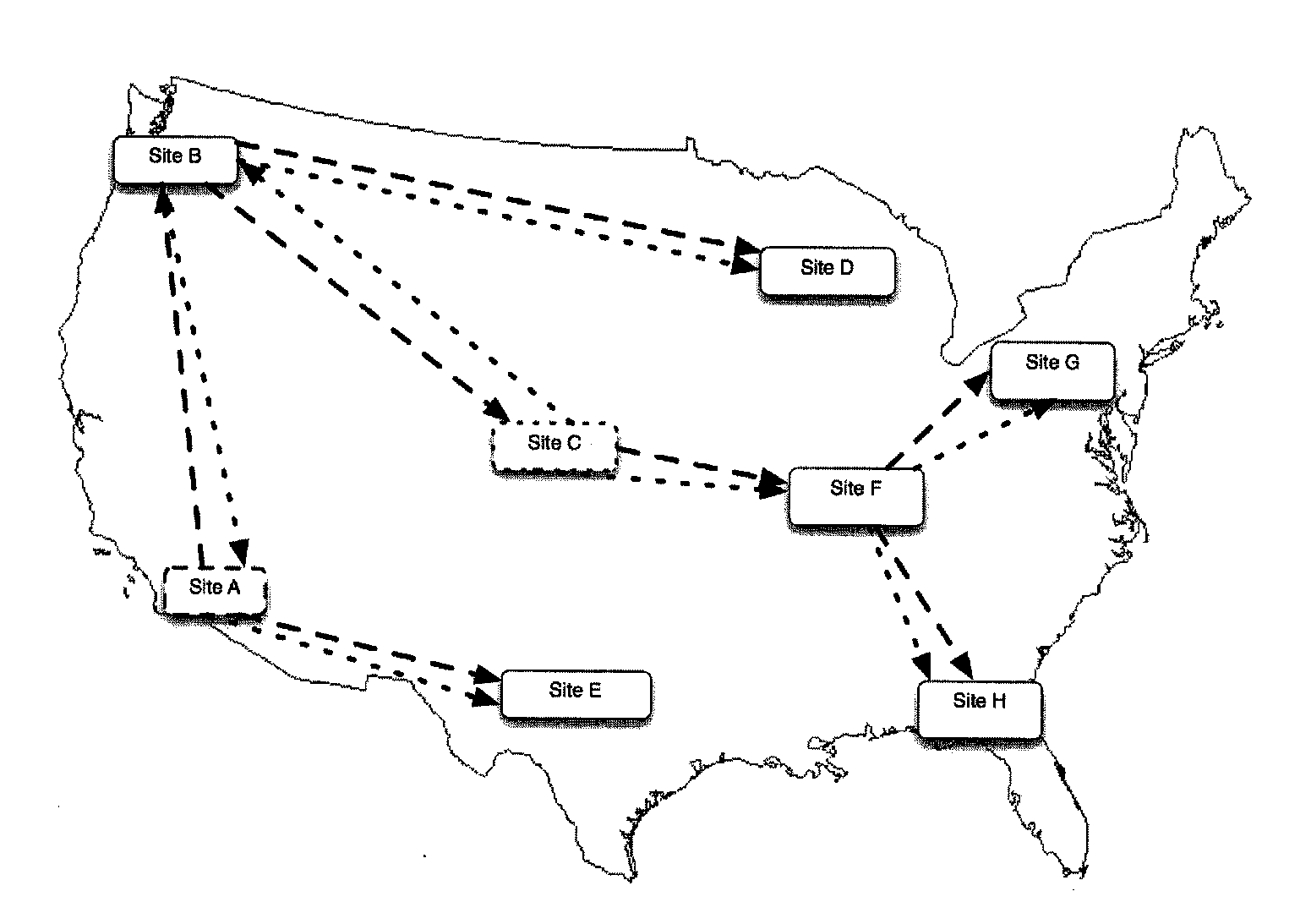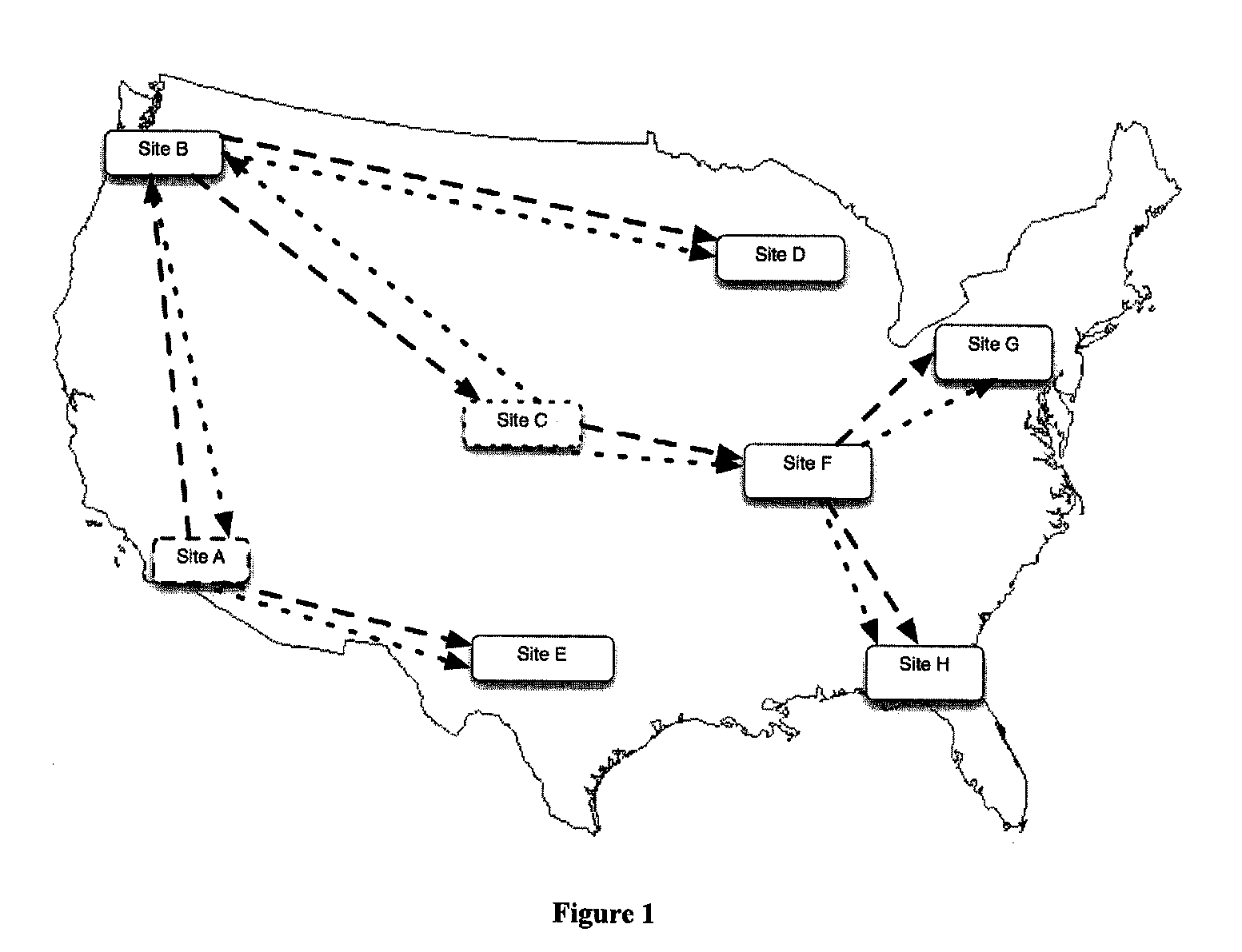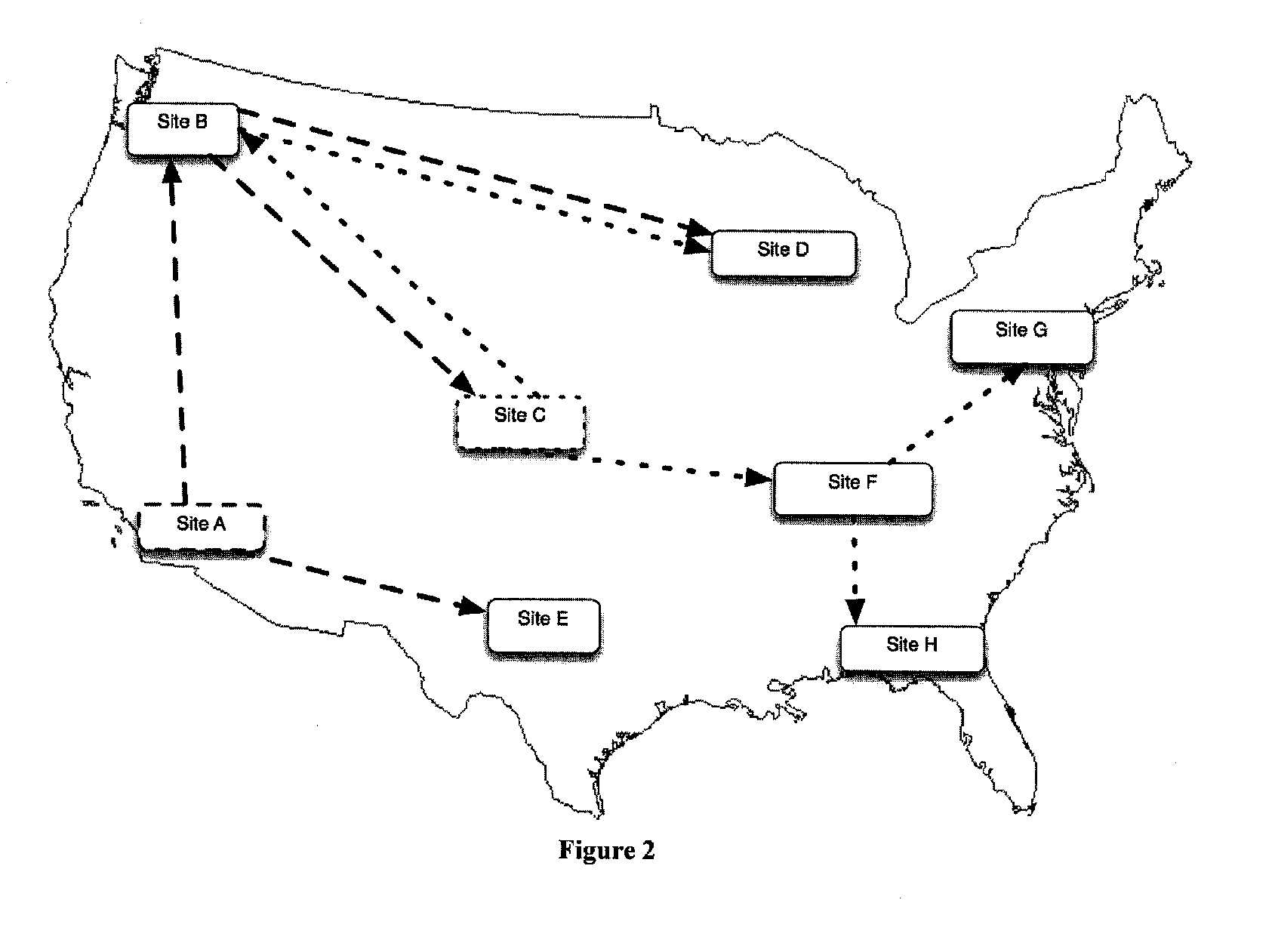However, several issues that are not addressed well by this architecture.
For example, content that is customized to different sub-groups of receivers requires dedicated
transponder space for each unique flow, which in turn makes this architecture economically unattractive for these content providers.
Also, satellites are not architected for two-way flows, which reduces their appeal to
interactive content providers.
Satellite architecture does not provide the flexibility, timeliness or
cost structure to support these content providers.
Professional content providers, however, have not adopted Internet streaming in a significant way for several reasons.
First, the architecture used by
the Internet is
unicast, which means each user gets a unique
stream that traverses the network from the
server to the user.
For content with a large audience, this is prohibitively expensive in bandwidth.
Second,
the Internet has poor reliability and consistency in terms of
delay, loss of packets and
jitter, all of which can substantially degrade the quality of the delivered video.
Media players use large buffers to smooth out these artifacts, which (a) cannot
handle long-lived issues, and (b) add significant latency to a live
stream.
However, they have the
disadvantage of being point-to-point transport methods and therefore cannot economically deliver these live flows to multiple locations.
One implementation of
multicast is on
the Internet Protocol (IP) routing level, where routers create distribution paths for datagrams sent to a
multicast destination address, while typically not guaranteeing reliability or delivery latency.
The limit to a small number of wide-area groups is an architectural limitation of
multicast at layer 3 because the state of each group must be continually monitored leading to unsustainable overhead.
IP Multicast over the Internet, however, suffers from a number of drawbacks.
It is susceptible to Internet anomalies and thus unreliable.
Moreover, implementation of large-scale services over the Internet via
IP Multicast is problematic because it is generally not supported by
Internet Service Providers (ISPs).
Other disadvantages of
IP Multicast are that the assignment of group identifiers is not coordinated and that the management overhead associated with supporting many wide-area groups is not scalable.
P2P networks, however, do not provide manageability and control since content passes through many third-party hosts.
P2P networks also require special
client software that may introduce security concerns.
Storage based CDNs, however, require large amounts of storage and a significant investment in infrastructure to support large scale and
high bandwidth or high speed applications like HD
video broadcast.
Storage and additional required IO operations add
delay both during the copy to edge nodes, as well as during playback from edge nodes to clients.
As a result, such systems do not provide live, real-
time distribution to all of their users.
Additionally, such systems do not provide fine-grained synchronization between all of the viewers and do not support bi-directional
interactive content exchange (such as a town-hall meeting with remote participants).
Such systems have a high fixed cost to support large scale and high quality
video broadcast.
However, players under MMOG architecture do not have a global all-inclusive view of the world since different users are on different instances of the game.
Additionally, the
scalability of MMOGs is impacted by the locations the clients connect from and the real-time requirements of the actual games.
Usually, the usage of overlay networks may come with a price, for example, in added latency that is incurred due to longer paths created by overlay routing, and by the need to process the messages in the application level by every
overlay node on the path.
First, the overlay routers incur some overhead every time a message is processed, which requires delivering the message to the application level,
processing it, and resending the message to the next overlay
router.
Second, the placement of overlay routers in the topology of the
physical network is often far from optimal, because the creator of the
overlay network rarely has control over the
physical network (usually the Internet) or even the knowledge about its actual topology.
As overlay paths have higher delays, it takes a relatively long time to detect a loss, and data packets and acknowledgments are sent on multiple overlay hops in order to recover the missed packet.
More specifically, in the disclosed MOON, intermediate overlay nodes
handle reliability and congestion control only for the links to their immediate neighbors and do not keep any state for individual flows in the
system.
Spines does not support multiple overlay networks.
Existing message-oriented overlay networks, however, have some significant limitations.
Existing MOONs are architecturally limited such that every
overlay node will correspond to only one computer.
This means that the capacity through that
overlay node is limited to what that computer can do, and the availability of that node is limited to the reliability of that single computer.
Moreover, the capacity problem is exacerbated because
message processing at the overlay level is typically compute intensive.
However, at the present time, the Internet does not support distribution of live
high definition content over a large number of channels directed to groups of content users.
This is because the Internet does not practically support native multicast at the
network level.
However, such proprietary networks serve a limited number of users and cannot be applied for delivery of content on a global basis without significant infrastructure investment.
The main drawback of constructing k overlays for the same ALM session is the increased control overheads.
Each rearranged topology triggers additional topology rearrangements causing a
positive feedback loop that can destabilize the network.
Further, this content needs to be delivered with minimal latency, consistently high quality, with high reliability, and at an attractive cost.
 Login to View More
Login to View More  Login to View More
Login to View More 


